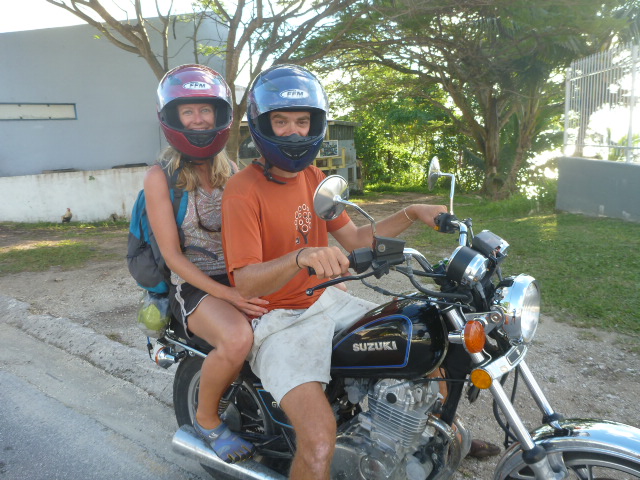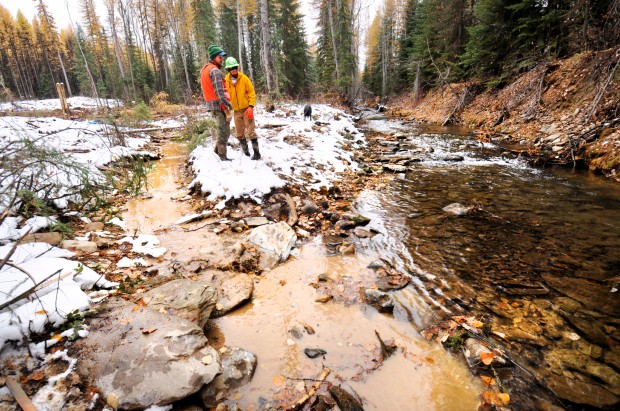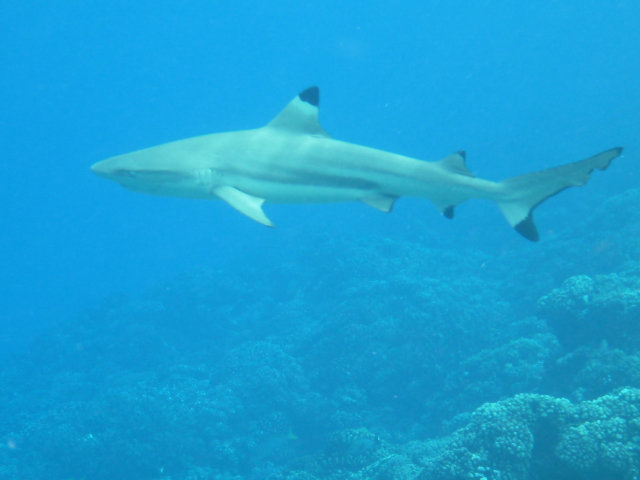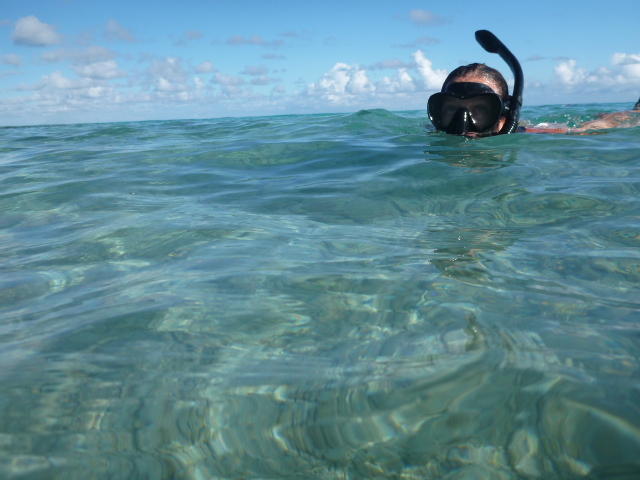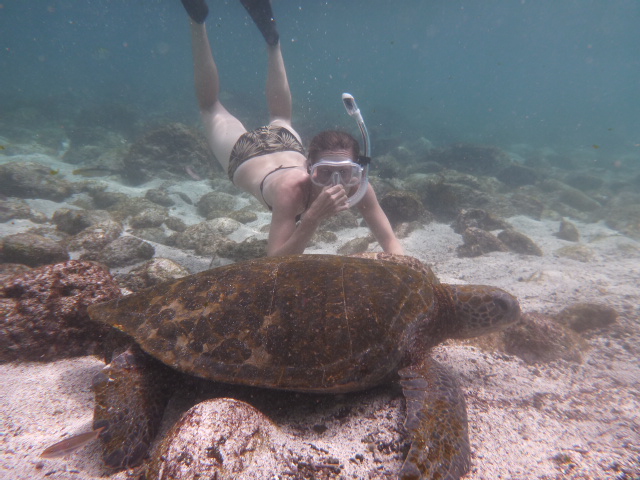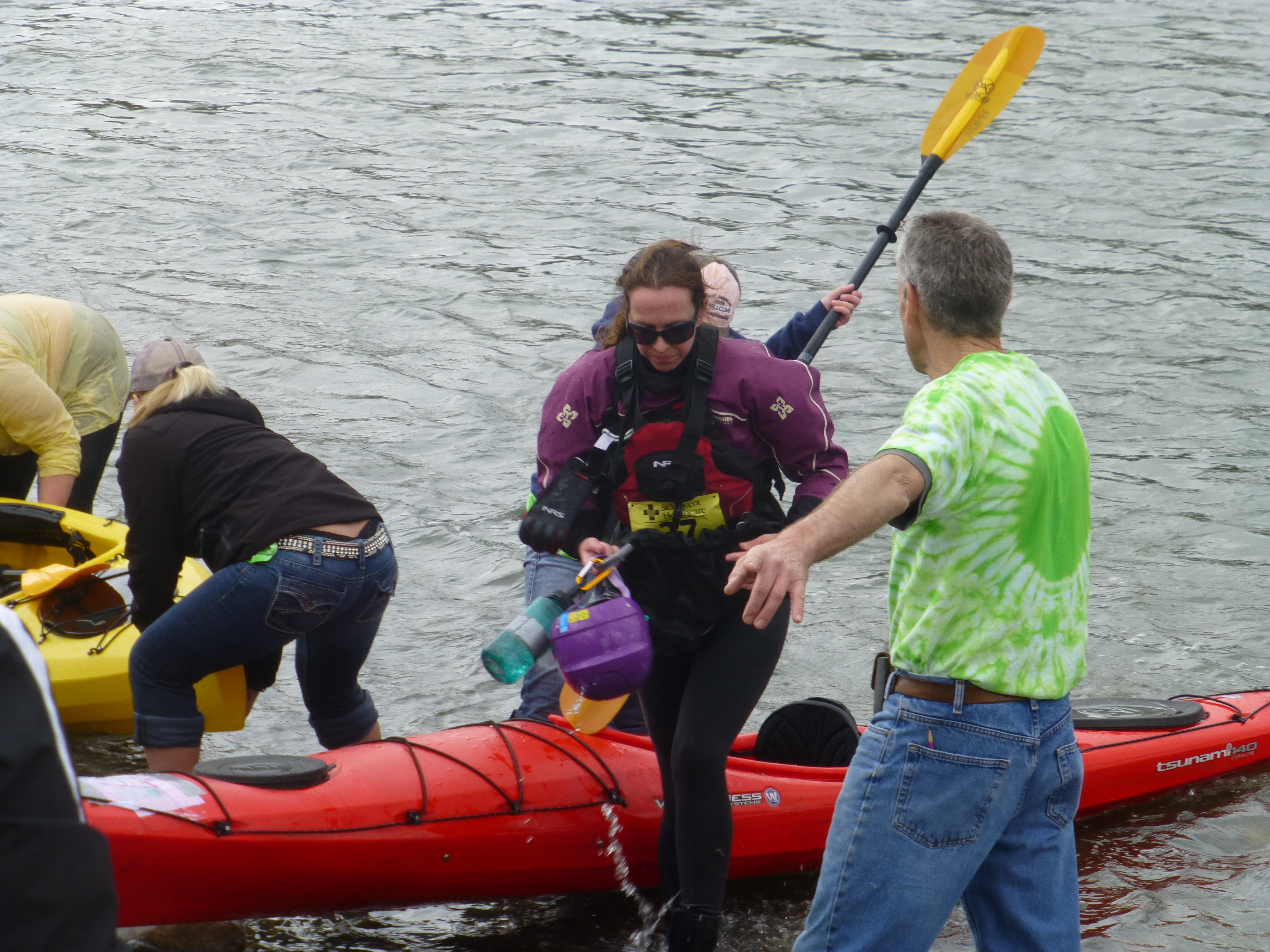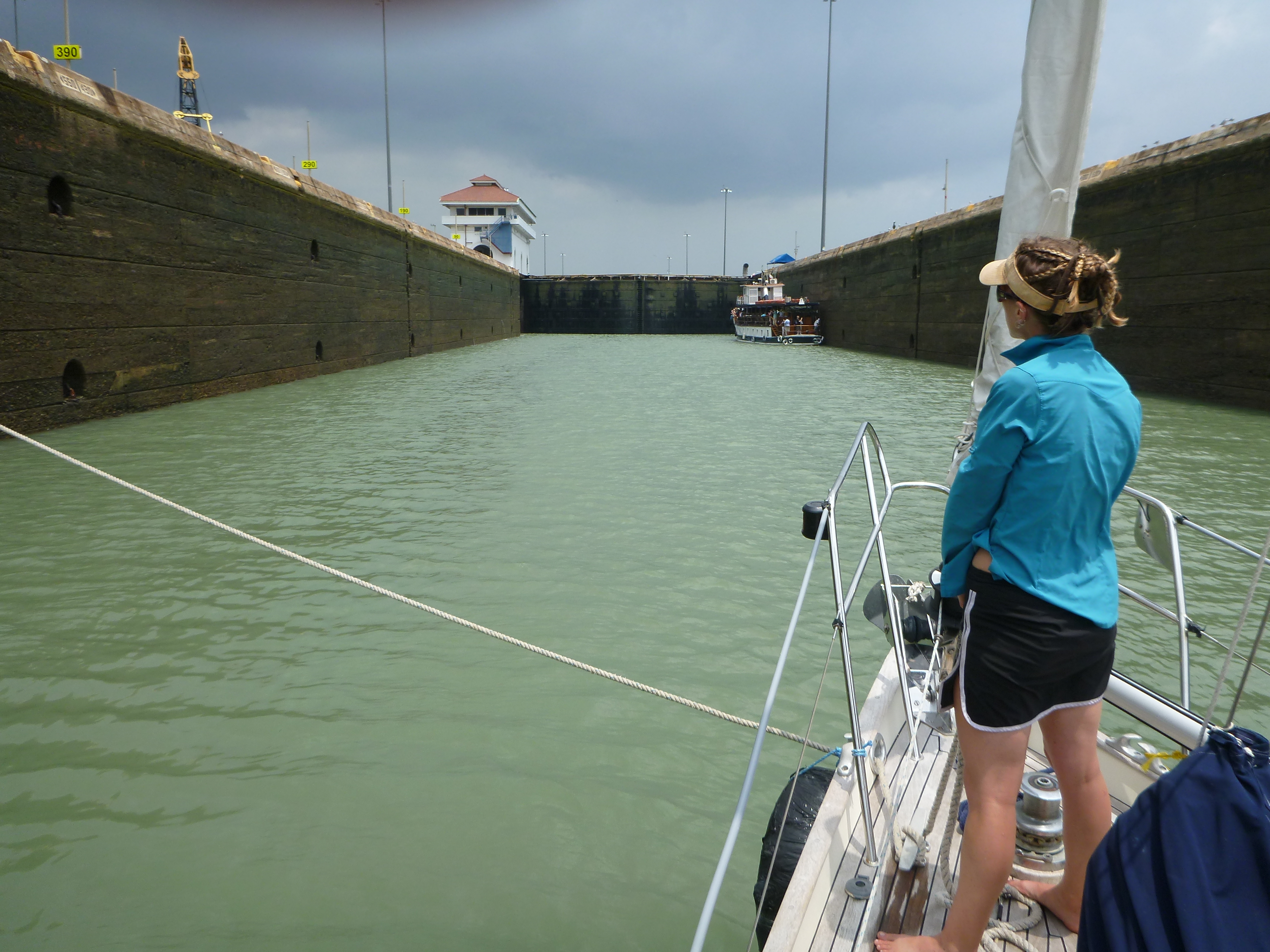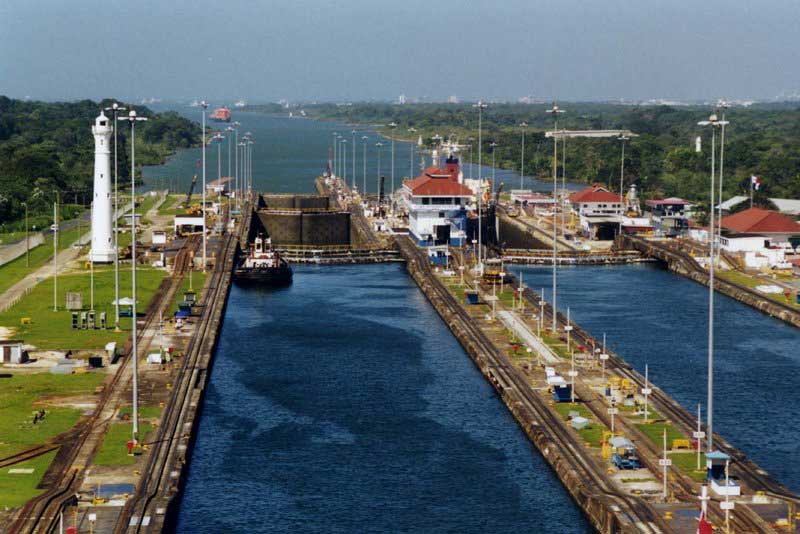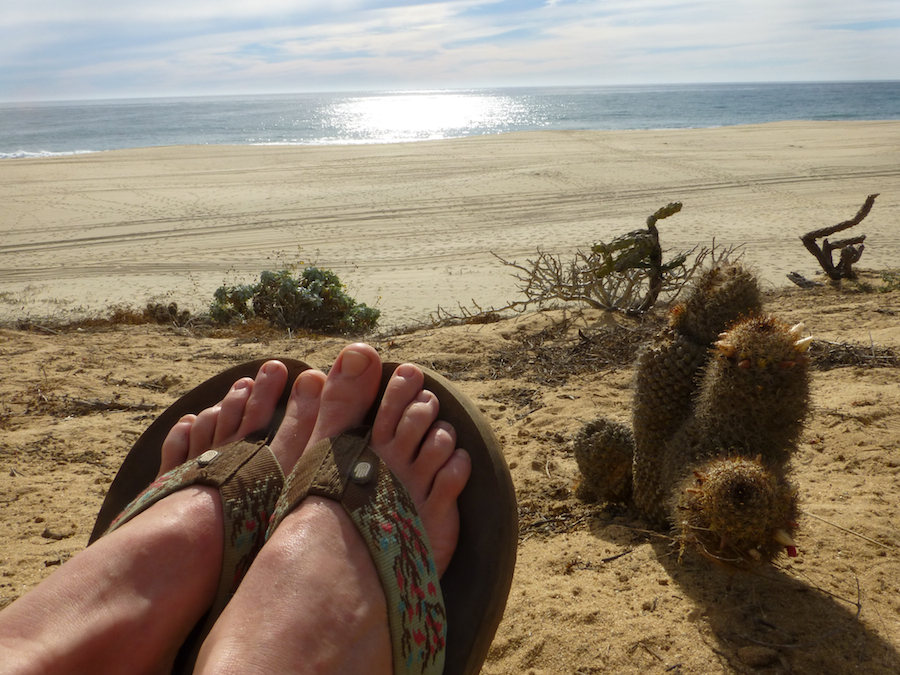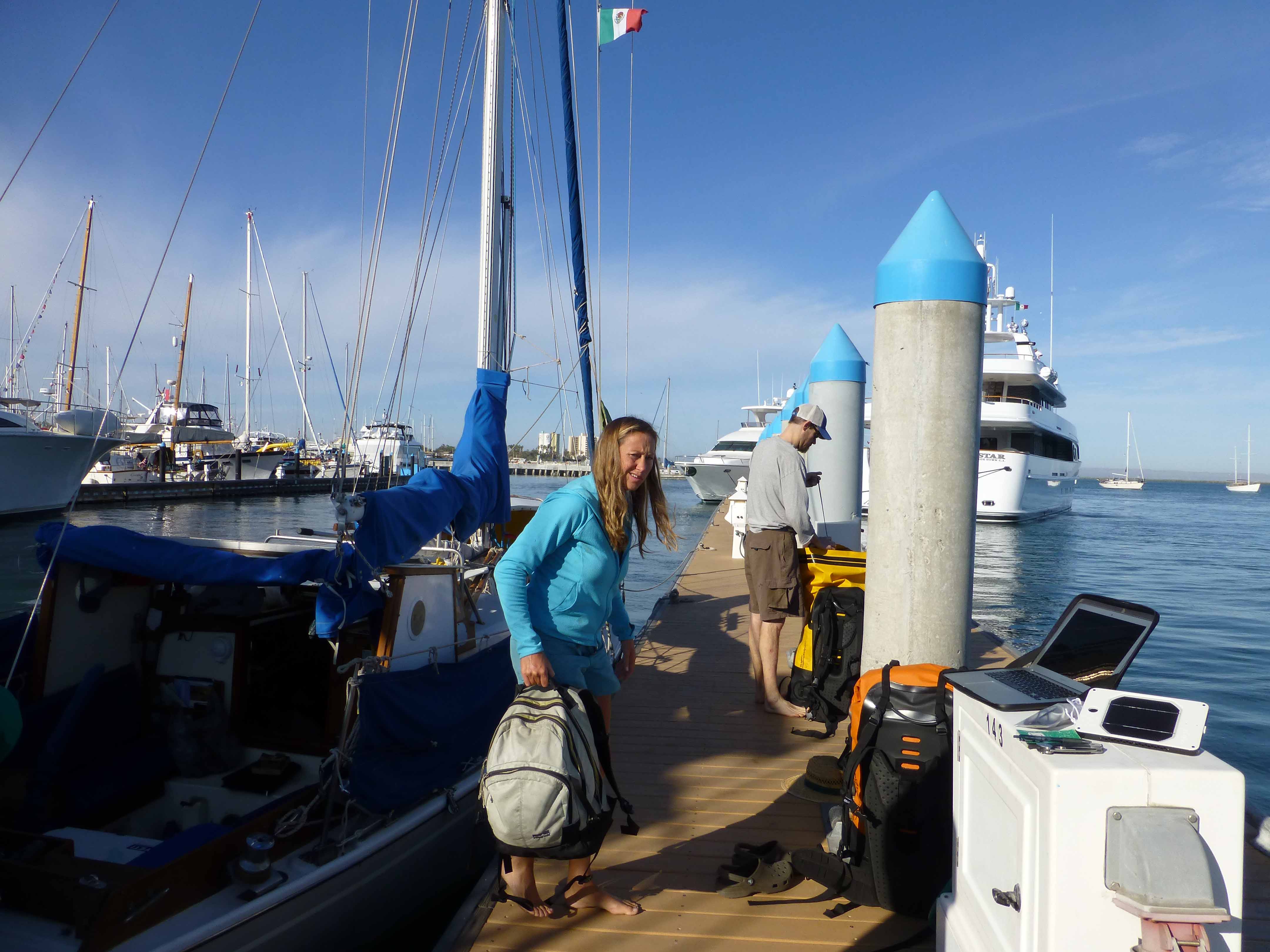Honeymoon in Niue
Lime green and lavender. These are the colors of our honeymoon in Niue. Wait, honeymoon? Didn’t you guys get married a year and a month ago? Yup. But we never took a honeymoon, since we were gearing up for our sailing + travel adventure.
After six weeks aboard Compass Rose(y) and five months at sea on other people’s boats, we were ready for our very own bedroom. As much as we have enjoyed sailing on Rose(y), our crewing situation has got two main drawbacks: we have no bed or door. Rob and I sleep on separate settees (translation from boat speak = “narrow couch”) in the main cabin. As the tiny island nation of Niue came into view after several passages in a row, I sat next to Rob on deck and said: “Let’s get a room, honey.”
Rob upped the ante by announcing it would be our late honeymoon. Perfect. We found the last available room for rent in Niue and booked it for three nights (it’s high season in Niue, which means the one flight per week is full of at least 50 tourists).
Our first night on land after five months was AWESOME. Except when it started pouring in the middle of the night, and we both jumped out of bed trying to close the hatches … that didn’t exist … and realized that the floor was pitching and tilting like we were riding 10-foot waves instead of standing on solid ground. Weird. We jumped back in our big, cozy bed and promptely fell back asleep.
We slept so well, actually, that we extended the stay from “weekend” to “week.” The room we rented was in a local’s home right downtown, and we enjoyed the owner’s company — Lawes, a Niuean who now lives in Australia part-time — as well as his hot water heater, refrigerator, electricity, washing machine, and the patio that didn’t move.
Since it was our honeymoon, we decided to splurge on the most romantic thing we could possible think of — a motorcycle.
Motorcycles are the perfect honeymoon craft. You have to hold on tight to your loved one as he careens over wet, slippery roads. You have to wear helmets that make you look like a popsicle, and that bang together in a plastic-y love-kiss when the cycle jerks forward. You can’t talk, so you get to share a secret language of nuanced physical touches: a death-grip on a shoulder means “slow down, damnit!” and a vise-squeeze around the hips means “let’s stay out of the potholes, ok?”
Just kidding. It was super fun to have a motorcycle, especially once my legs unclenched after the first day (I’ve only ridden a motorcycle once for 45 seconds). Rob was a stellar driver, and didn’t throw me off the back even once. It did rain most of the time, so we had to wear our green rubber coats, which made us look even more like delicious lime popsicles. To top it all off, we got to use the cute little horn often to “beep beep” all the chickens off the road.
Back to the colors: lime green and lavendar don’t just refer to the color of our rain coats and helmets. Niue is 100 square-mile island plateau that rises 200 feet out of the sea, and is home to a whopping 1,600 people. It’s nicknamed “The Rock,” since the ground is made up of old, dead coral and limestone. The limestone is what makes the water look green. The coralline algae encrusting the rocks and caves is lavender.
Beneath the island is a lens of freshwater, which pours out of the island into the sea. This creates all kinds of awesome caves, chasms, and crevices to explore on land and underwater. It also creates a crazy blending of fresh and salt water along the shore, which makes things look blurry when the cold and warm waters mix. All sorts of fish frolic in the clear water, and whales pass by, too.
Niue (pronounced “new-ay”) is from ‘niu,’ which means coconut, and ‘e,’ which means behold. So, basically, the first settlers a few hundred years ago exclaimed: “Hey, check out all these coconuts.” One other fascinating tidbit: Captain Cook never succeeded in landing here. The natives all had red-stained mouths from a local root, and it scared the bejesus out of Cook and his crew, who named Niue “The Savage Island.”
All told, we’ve spent 10 solid days exploring this one-of-a-kind island, and highly recommend it as a honeymoon destination. Unfortunately, there are only two ways to get here: sail or catch the one flight per week from New Zealand. The other downside is that tomatoes cost $4 each — produce in general is scarce, and more expensive than jewelry.
As we bid “The Rock” a fond farewell tomorrow when we sail to Tonga, we’ll remember these top highlights from our Niuean honeymoon:
> Rob faced his biggest fear: sea snakes. The venemous striped sea snakes are ALL OVER the reefs here. Other than one chasing me for a few minutes one morning, they are totally harmless, since their mouths don’t fit over any part of a human body. Whew!
> Whales spouting just offshore, and singing under water.
> As many showers as we wanted, with water as hot as we could stand.
> Climbing through forests carpeted in coral into caves.
> $5 Indian rotis at the restaurant next door to our rented room.

